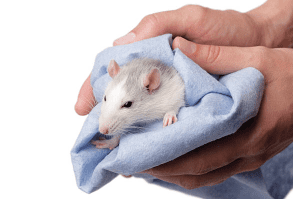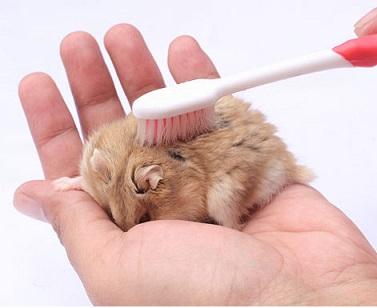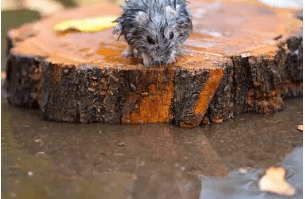If you’ve ever thought, “My hamster looks wet, but I don’t know why,” or wondered how your “hamster got wet” in the first place, you’re not alone.
Being an expert in rodent care, I can tell you that I know many hamster owners who have come across this issue and wonder how their hamster got wet in the first place and whether it can lead to health issues.
Let’s dive in and explore together the causes, risks, and solutions to this wet hamster conundrum.
Table of Contents
Common Causes of Wetness
From water spills to increased humidity, various factors could make your hamster wet. Recognizing these causes is key to preventing potential health problems.
Let’s take a closer look at these possible culprits.
Water Spills or Leaks in the Cage
Your hamster could get wet from an accidentally tipped water bottle or a leaky dispenser. Hamsters love to explore and may accidentally cause a water spillage, leaving them soaked.
Increased Humidity
If you live in a humid environment, your hamster might end up damp. Hamsters are adapted to dry climates, and increased humidity can make them wet and uncomfortable.
Urine or Feces Accumulation on the Hamster’s Fur
Sometimes your pet’s hygiene can be the cause. Accumulation of urine or feces on your hamster’s fur can lead to them looking and feeling wet.
Wet Bedding or Substrate in the Cage
Improper bedding or damp substrate in the cage can also contribute to a wet hamster. Poor cage hygiene or a leaky water dispenser can lead to this situation.
The picture is clear. A wet hamster is not a good situation, but why exactly? Let’s uncover the risks and consequences of a wet hamster.
The Risks and Consequences of a Wet Hamster
A wet hamster isn’t a simple inconvenience. It can lead to serious health risks, including infections and compromised immune systems. Let’s delve into these threats and understand why we must prioritize keeping our hamsters dry.
Health Risks Associated with a Wet Hamster
Wetness can trigge
r a series of health issues in hamsters. And it’s not just about your hamster looking wet. The effects can be more damaging and long-lasting.
Let’s unravel these risks further.
Skin Infections
Moisture is a breeding ground for bacteria, and a continuously wet hamster could develop skin infections. These infections may appear as redness or swelling on the skin.
Fungal Infections
In addition to bacteria, fungi thrive in damp conditions. Your wet hamster could develop fungal infections, causing discomfort and itching.
Irritated and Red Skin
Wetness can cause irritation and redness on your hamster’s skin. This can lead to excessive scratching and possible skin damage.
Prone to Parasites
A damp environment can attract parasites, putting your wet hamster at risk. These parasites can cause skin issues and other health problems.
Respiratory Problems
Hamsters living in damp conditions are prone to developing respiratory problems. Humidity can encourage the growth of mold, leading to respiratory distress.
Compromised Immune System
Constantly wet tail hamster conditions can stress your hamster, weakening its immune system and making it susceptible to various diseases.
Reduced Quality of Life
Not surprisingly, all these health issues can drastically reduce your pet’s happiness and overall quality of life.
Impact on Hamster’s Coat and Skin
Prolonged wetness can damage your hamster’s coat, making it lose its natural shine and softness. It can also lead to skin issues like cracking or peeling.
Preventing Wetness in Hamsters
Prevention is always better than cure, especially when it comes to keeping your hamster dry. Ensuring a proper cage setup and maintaining appropriate humidity levels can go a long way.
Let’s uncover these preventive measures further.
Proper Cage Setup
A well-designed cage can prevent accidental water spillages. Consider using water bottles instead of dishes and place them properly to avoid tipping.
Maintaining Appropriate Humidity Levels
If you live in a humid area, using a dehumidifier can help maintain a dry environment for your hamster, preventing it from a wet tail hamster. Regularly monitor humidity levels to ensure they are suitable for your pet.
Avoiding Wet Substrates and Spills
Ensure regular cleaning of your hamster’s cage to avoid wet substrate or bedding. Keep an eye on water dispensers to prevent any leaks.
Protecting Hamsters from Wet Environments
Avoid exposing your hamster to wet environments. Whether it’s a damp lawn or a humid room, it’s best to keep your pet away from such areas.
But what if you find your hamster already wet? Don’t panic! It’s time to explore how to handle such situations.
Handling Wet Hamster Situations
If you discover your hamster is wet, immediate action is required. Assessing the cause and gently handling your pet can minimize stress and prevent further health issues.
Let’s discuss how to manage these situations effectively.
Assessing the Cause of Hamster Wetness
Identify why your hamster looks wet. Is it a water spill, or is the bedding damp? Or could it be a more serious health issue like a wet tail hamster condition?
Gentle Handling and Minimizing Stress
Handling a wet hamster requires care. Minimize stress by providing a warm, comfortable environment and avoiding sudden movements.
Safe and Effective Drying Methods

It’s crucial to dry your hamster effectively yet safely. Avoid using a hairdryer as it may stress or burn your hamster. Opt for gentle methods like blotting with a soft towel.
Drying and Grooming a Wet Hamster
Drying a wet hamster involves more than just removing the moisture. It also includes grooming to prevent tangled or matted fur.
Let’s explore the steps involved in drying and grooming your pet.
Step-by-Step Guide to Drying a Wet Hamster
Begin by gently blotting your wet hamster with a soft towel. Avoid rubbing to prevent skin irritation. Then, let it naturally dry in a warm, comfortable, and dry environment.
Brushing and Grooming Techniques

Regular brushing can help keep your hamster’s fur in good condition. Use a soft-bristled brush suitable for small pets, and be gentle.
Dealing with Tangled or Matted Fur
Tangled or matted fur can be a challenge. Use a soft brush and work through the tangles gently to avoid hurting your hamster.
Promoting Natural Drying and Self-Grooming
Hamsters are excellent self-groomers. Providing them with a dry, comfortable environment can encourage natural drying and grooming.
Health Care for Wet Hamsters
After dealing with a wet hamster situation, monitoring your pet for any signs of illness or infection is essential. Let’s discuss the best practices for health care.
Monitoring for Signs of Illness or Infection
Keep an eye out for any unusual behavior or physical changes in your hamster. Symptoms like reduced activity, redness, or swelling may indicate health issues.
Providing a Comfortable Recovery Environment
Provide a warm and dry recovery environment if your hamster has been wet. This can speed up the recovery process and minimize stress.
Administering Medications and Treatments
If needed, provide necessary medications or treatments as advised by your vet. Timely treatment can prevent further health complications.
Consulting a Veterinarian for Expert Guidance
If your hamster looks unwell or the wetness persists, consult a vet. Expert guidance can help address any underlying health issues.
Tips for Maintaining Dry Conditions
Maintaining a dry environment is key to keeping your hamster healthy and happy. Proper cage cleaning and choosing suitable bedding materials can help.
Let’s discuss these tips in detail.
Proper Cage Hygiene and Cleaning Practices
Regularly clean your hamster’s cage to prevent dampness. A clean cage is not just dry but also healthier for your pet.
Choosing Suitable Bedding Materials
Select absorbent and dust-free bedding for your hamster’s cage. This can help maintain a dry environment and prevent respiratory issues.
Monitoring Water Dispensers and Leakages
Keep an eye on water dispensers and fix any leaks promptly. Regular checks can help prevent water spillages that may dampen your hamster.
Conclusion
Having a wet hamster isn’t just about your pet getting a bit of a soak. It’s about their health, happiness, and overall quality of life. By understanding the causes, risks, and solutions, you’re now well-equipped to tackle the wet hamster dilemma.
Remember, a dry hamster is a happy hamster! So, let’s keep our furry friends dry, healthy, and thriving.
FAQs
Why is my hamster wet?
Your hamster may be wet due to water spills in the cage, high humidity in the environment, urine or feces accumulation on its fur, or wet bedding in the cage.
Is it bad for my hamster to be wet?
Yes, it can be harmful. Wetness can lead to health risks such as skin and fungal infections, irritated skin, parasite susceptibility, respiratory problems, and a compromised immune system.
How can I dry my wet hamster?
You can dry your wet hamster by gently blotting it with a soft towel and allowing it to dry naturally in a warm and comfortable environment. Avoid using hairdryers as it may stress or harm your hamster.
What is the medicine for a wet tail hamster?
The wet tail hamster condition, a common and potentially serious condition, needs quick medical care and treatment. Treatment typically includes a 5-day dose of antibiotics, OASIS WET-TAIL Plus, which can be mixed with your hamster’s water.
Alina Hartley is a small-town girl with a ginormous love of bearded dragons. It all started with Winchester, a baby bearded who was abandoned at the shelter by his former owners because of a birth defect that caused one front leg to be shorter than the other. Alina originally went to the shelter looking for a guinea pig, but one look at Winchester and it was love at first sight. From that day on, Alina has dedicated her life to learning everything she can about bearded dragons. She loves helping new beardie parents start their incredible journey with these magnificent reptiles.
Follow her on:
LINKEDIN
TWITTER.
Read her latest articles HERE
Learn more about her HERE.

